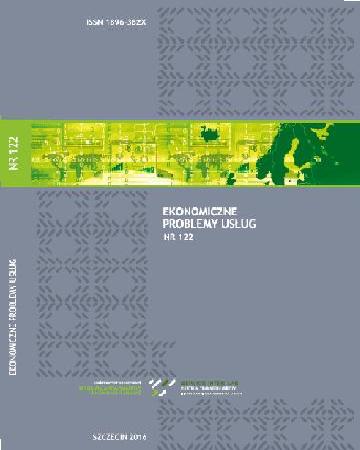
ISSN: 1896-382X
eISSN: 2353-2866
OAI



Issue archive /
nr 117 2015
Court Technology jako przykład zastosowania ICT w sądownictwie
(Court Technology as an example of ICT implementation in common judiciary)
| Authors: |
Monika
Odlanicka-Poczobutt
Politechnika Śląska |
| Keywords: | ICT Court Technology general jurisdiction open source |
| Data publikacji całości: | 2015 |
| Page range: | 10 (531-540) |
Abstract
Currently, courts in many countries are looking more than ever for ICT applications that would serve to case management and documentation to support their daily activities. The purpose of the article was to present the indicated solutions in the judiciary, which is the Court Technology on the example offered by commercial software company in the US based on the open source model. Significant problems with the possibilities of using such solutions in the judiciary have been only indicated in the article and will provide the basis for further, in-depth research.
Download file
Article file
Bibliography
| 1. | Bailenson J.N., Blaskovic J., Beall A.C., Noveck B. (2004), Courtroom Applications of Virtual Environments, Immersive Virtual Environments, and Collaborative Virtual Environments, Law & Policy, vol. 28, No. 2. |
| 2. | Beard J. (2004), An Open-Source System for Electronic Court Filing, „Linux Journal”, Issue #122/June. |
| 3. | Carnevali D. (2009), E-Justice and Policies for Risk Management, w: A.Cerrillo, P. Fabra (eds.), E-Justice: Information and Communication Technologies in the Court System, United States of America: Information Science Reference. |
| 4. | Cloud network architecture and ICT – Modern Network Architecture (2013), Itknowledgeexchange.techtarget.com. |
| 5. | Court Technology Framework, The Joint Technology Committee and the National Center for State Courts © Copyright 2008. |
| 6. | Dixon H.H.B. (2011), The Evolution of a High-Technology Courtroom, w: Future Trends in State Courts 2011, National Center for State Courts, s. 28–33. |
| 7. | Gołaczyński J, Informatyzacja sądów – wyzwania prawne. Elektroniczny protokół – projekt badawczy w zakresie transkrypcji treści nagrań audio-wideo z posiedzeń sądo-wych, Kwartalnik Informacyjny Ministerstwa Sprawiedliwości „Na wokandzie”, Wo-kanda nr V. |
| 8. | Hamin Z., Othman M.B., Munirah A. (2012), ICT Adoption by the Malaysian High Courts: Exploring the Security Risks Involved, 2012 International Conference on In-novation, Management and Technology Research (ICIMTR2012), Malacca, Malaysia: 21–22 May 2012, s. 285–289. |
| 9. | Kiskis M., Petrauskas R. (2004), ICT Adoption in the Judiciary: Classifying of Judicial Information, „International Review of Law, Computers & Technology”, Vol. 18, No. 1, s. 37–45. |
| 10. | Lederer F.I. (2004), Courtroom Technology: The Courtroom 21 Project: Creating The Courtroom of the Twenty-First Century, 43 Judges’ Journal 39, Winter. |
| 11. | Macdonald R., Burdon M., Jackson S. (2006), Ensuring the Integrity of the |
| 12. | E-court Process, Proceedings Justice Environments Conference 2006, Melbourne. |
| 13. | Melody W. et al. (1986), Information and Communication Technologies: Social Sciences Research and Training: A Report by the ESRC Programme on Information and Communication Technologies, ISBN 0-86226-179-1. |
| 14. | Odlanicka-Poczobutt M. (2013), Zastosowanie nowoczesnych technik informacyjnych w sądownictwie powszechnym, w: Europejska przestrzeń komunikacji elektronicznej, red. J. Buko, Zeszyty Naukowe Uniwersytetu Szczecińskiego nr 763, Ekonomiczne Problemy Usług nr 105, t. II, Szczecin 2013, s. 553–561. |
| 15. | Odlanicka-Poczobutt M. (2014), Rola technologii informacyjno-komunikacyjnych (ICT) w sądownictwie powszechnym – wyzwania i możliwości, w: Ekonomiczno- |
| 16. | -społeczne i techniczne wartości w gospodarce opartej na wiedzy, red. J. Buko, Zeszyty Naukowe Uniwersytetu Szczecińskiego nr 809, Ekonomiczne Problemy Usług nr 113, t. II, Szczecin 2014, s. 93–101. |
| 17. | Rebo J., Roper B., Harvey T. (2009), Court Technology Conference 2009, Sept 23, 2009, Rooms 702–706, Denver, Colorado. |
| 18. | Sallai G. (2012), Defining Infocommunications and Related Terms, Acta Polytechnica Hungarica, Vol. 9, No. 6. |
| 19. | Sartor G. (2011), Introduction: ICT and Legislation in Knowledge Society, w: Legislative Xml for the Semantic Web. Principles, Models, Standards for Document Management, G. Sartor, M. Palmirani, E. Francesconi, M.A. Biasiotti (eds.), Springer – Law, Governance and Technology Series, Vol. 4. |
| 20. | Shelton D.E. (2006), Technology, Popular Culture, and the Court System – Strange Bedfellows?, w: Future Trends in State Courts 2006, National Center for State Courts, s. 62–67. |
| 21. | Silverstone R. et al. (1991), Listening to a long conversation: an ethnographic ap-proach to the study of information and communication technologies in the home, „Cul-tural Studies”, 5(2). |
| 22. | Tracy L., Guevara J.K., Stegman E. (2008), IT Key Metrics Data 2009: Key Applica-tions Measure: Life Cycle Distribution: Current Year, 15 December 2008, ID G00163849. |
| 23. | Velicogna M. (2007), Justice Systems and ICT: What Can Be Learned From Europe?, „Utretch Law Review”, Vol. 3, Issue 1 (June). |